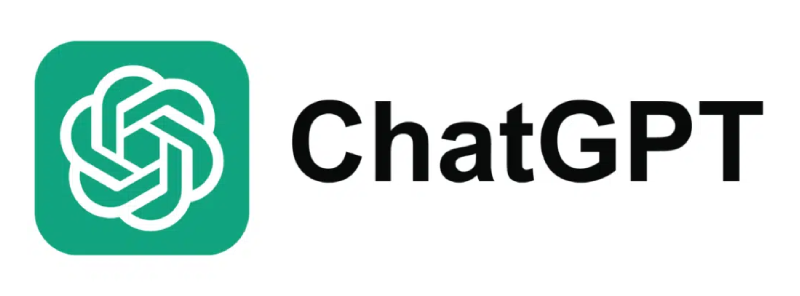Key takeaways
- Promissory notes offer a legally binding way to document loans without the formality of a full contract
- They're essential for everything from personal IOUs and business loans to property deals and salary advances
- A legally valid note must include loan terms, interest, repayment schedule, default clauses, and signatures
- Unpaid promissory notes can lead to lawsuits, credit damage, collateral seizure, or debt collection
- Tools like Docupilot help you draft, collaborate on, and sign legally sound promissory notes in minutes
“Can I just text ‘you owe me’ and call it a day?”
That’s what most people think when they’re lending a few hundred bucks to a friend, a co-worker, a contractor, or that one cousin who swears this time is different.
Formal contracts feel like overkill. But you need to be assured that you’ll get your money back because money can make things awkward fast. In fact, one in five people say they’ve lost a friendship over unpaid loans. That’s a lot of birthday parties missed over $250.
So, how do you prevent this? With a promissory note.
It’s not a full-blown contract, so it doesn’t feel weird bringing it up. But it is legally binding.
In this post, we’ll break down what a promissory note is, when you should use one, and how to write it without missing the fine print.
What Is a Promissory Note?
A promissory note is a written, legally binding financial promise where one party (the borrower) unconditionally agrees to repay a specific sum of money to another party (the lender), either on demand or by a specific date.
A promissory note is commonly used for personal loans between friends or family, or in formal business and real estate transactions.
When to Use a Promissory Note?
Understanding the promissory note definition can be useful for a wide range of lending and borrowing situations, especially when documentation and enforceability are important. It provides legal clarity in transactions where money is exchanged with the expectation of repayment.
- Borrowing money from friends or family: Used to document informal personal loans between individuals. Helps avoid misunderstandings by setting clear terms for repayment, interest (if any), and due dates.
- Business loans and vendor arrangements: Used when a company receives funds from private lenders, investors, or other businesses. Also applicable when deferring payments for goods or services.
- Property transactions and seller financing: Used in real estate deals where part of the purchase price is paid over time. Often included in transactions involving direct financing between buyer and seller without traditional bank involvement.
- Employee loans or salary advances: Used by companies to provide financial support to employees, with terms covering repayment through payroll deductions or scheduled payments.
- Co-founder or partner contributions: Used in business partnerships where one party contributes capital with an expectation of repayment or conversion to equity under agreed terms.
While promissory notes are commonly used in a wide range of lending situations, there are also specific scenarios where they are not optional but legally essential.
When it’s legally necessary to use a promissory note
In certain situations, a promissory note is necessary to establish a formal, enforceable loan agreement. Here are the cases where a promissory note is non-negotiable.
1. Large loan amounts
When the borrowed amount is significant, especially in personal or business transactions, a written and signed promissory note is required to ensure legal clarity and protect both parties. Verbal agreements do not hold up well in court (or can be difficult to prove) without documentation.
2. Loans that include interest
If interest is being charged, then the rate, calculation method, and repayment terms must be recorded in writing. This protects the lender and ensures the agreement complies with applicable usury laws.
3. Repayment in multiple installments
When the repayment is scheduled over a period of time, such as weekly or monthly, the promissory note must detail the frequency, amount, and due dates of each installment. This avoids disputes regarding missed or delayed payments.
4. Loans backed by collateral
For secured loans, the promissory note must specify the asset provided as collateral. It should also include the conditions under which the lender can claim that asset in the event of a default. Without this, collateral rights are difficult to enforce.
5. Situations with legal or financial risk
When the agreement involves any financial risk to either party, written documentation becomes necessary. A signed promissory note creates a clear record of the terms, making legal enforcement possible in case of non-payment or breach of agreement.
6 Types of Promissory Notes

Promissory notes come in different forms depending on the lender, borrower, and repayment structure.
1. Simple promissory note (personal IOU)
This is the most basic type, often used between friends, family members, or acquaintances. It outlines the loan amount, repayment terms, and interest (if any), but doesn’t involve collateral or legal terms.
For instance, if John lends his roommate $500, they draft a one-page note stating that the amount will be repaid in full within two months with no interest.
2. Commercial promissory note (business-to-business transactions)
These are more formal and are often used in business contracts, such as when a company borrows funds from another business or an investor. It includes stricter terms, like late payment penalties and legal remedies. These notes often involve larger amounts and can even be bought and sold in financial markets.
For example, if a startup borrows $25,000 from an investor, they would use a commercial note that outlines monthly interest payments, a balloon (lump-sum) payment after 12 months, and a late fee if payments are missed.
3. Secured promissory notes
This type of promissory note is backed by collateral such as a car, property, or equipment. If the borrower defaults, the lender can claim the asset.
Consider, for example, a borrower who pledges their car as collateral for a $5,000 loan. The note specifies that failure to repay means the lender can take ownership of the car.
4. Unsecured promissory note
In this type of promissory note, no collateral is involved. The lender relies solely on the borrower’s promise and creditworthiness.
A good example is an unsecured note between a startup and an angel investor, where no assets are tied to the promissory note agreement.
5. Demand promissory notes
This can be called at any time. The lender can request full repayment whenever they choose, typically with short notice.
For instance, if Leo lends a college mate $2,000, he could write a demand promissory note that says he must repay the amount "on demand" with no fixed deadline or within 30 day’s notice
6. Instalment promissory note
The specifies a fixed repayment schedule, usually monthly payments over a set term
Let’s say a borrower agrees to repay a $10,000 loan in monthly installments of $500 over 20 months, including interest. This is an example of when an instalment promissory note can be used.
How Promissory Notes are Used in Business

Promissory notes offer legal clarity and speed. They're quicker to create than a full-blown contract, more professional than verbal agreements, and easier to enforce if things go south.
Here’s how businesses use them:
1. Short-term financing without the bank hassle
A business can issue a promissory note to secure funds from private lenders, investors, or even other companies. These notes often have flexible terms and faster approval timelines than traditional bank loans.
2. Employee loans or advances
Companies sometimes use promissory notes to formalize salary advances or personal loans to employees. It protects both parties and ensures repayment without awkward HR conversations later.
3. Deferred payments between businesses
When a company can’t pay another business upfront (for goods, services, or licensing), a promissory note allows them to commit to future payment terms. It maintains trust while keeping cash flow in check.
4. Acquisition deals and buyouts
In M&A scenarios, buyers may not pay the full amount upfront. A promissory note bridges the gap, offering the seller assurance that the remaining amount will be paid over time.
5. Business partnerships and co-founder agreements
Early-stage founders often contribute cash at different times. Promissory notes help document who paid what, when, and under what repayment or equity terms.
6. International trade and commercial deals
In global commerce, promissory notes act as a trust bridge between buyers and sellers who may not know each other well. They help formalize cross-border credit terms while offering legal recourse.
What’s Inside a Legal Promissory Note?

To stand in court, a promissory note must include:
1. Parties involved
Every promissory note starts by clearly identifying the two main parties, the borrower and the lender. It includes their full names, contact details, and sometimes tax or ID numbers to avoid any confusion.
2. Loan amount and interest rate
The note must specify the principal amount being borrowed, along with the interest rates, if applicable. This reduces the risk of future disputes and ensures legal compliance.
3. Payment schedule
This outlines how and when the borrower will repay the debt:
- Lump sum or installments
- Monthly, quarterly, or on a specific date
- How payments will be made (bank transfer, check, etc.)
- Start and end dates for payments
4. Default terms (non-payment consequences)
The note should state what counts as a default. This includes missed payments, late payments, or breach of terms, and what consequences will follow, like:
- Late fees
- Acceleration of the full amount
- Legal action or seizure of collateral (if applicable)
5. Signatures
A promissory note isn’t valid without the signatures of all parties involved. In some cases, witnesses or notarization may also be required, depending on the loan amount and jurisdiction.
How Legally Binding Is a Promissory Note?
A promissory note becomes legally binding only when it’s properly drafted, signed, and includes all essential elements. In general, a promissory note is valid for three years starting from the date of execution and holds the same legal weight as any standard legal contract.
Let’s break it down.
When is a promissory note valid in court?
For a promissory note to be enforceable, it must check a few boxes:
- Identify the borrower and lender
- State a definite amount to be repaid
- Include repayment terms (schedule, method, interest)
- Include signatures
What happens if a promissory note is not paid?
If the borrower fails to repay according to the agreed terms, the lender has legal options to recover the money. Depending on how the note is structured, consequences can include:
- Lawsuits and court cases: The lender can file a lawsuit to recover the debt. If they win, the court may issue a judgment allowing wage garnishment or bank account seizure.
- Credit damage: If the lender reports the default to credit bureaus (in commercial or larger personal loans), the borrower’s credit score could take a serious hit.
- Collateral seizure (in secured promissory notes): If the note is backed by assets (car, property, or equipment), the lender can take possession of that asset to recover losses.
Look at the case of the Estate of H. Gregory Brown v. Carrie M. Ward, et al. (2024). The lender obtained a personal judgment against the borrower under the promissory note and proceeded to foreclose on the property pursuant to the deed of trust, as the judgment remained unsatisfied.
- Collection agencies: In some cases, the lender may hand the debt over to a collection agency. This third party then takes over efforts to recover the unpaid balance.
In the case of Nagle & Zaller, P.C., et al. v. Jahmal E. Delegall, et al. (2022), a law firm engaged in debt collection activities on behalf of a client, including the preparation of a promissory note containing a confessed judgment clause and the filing of a confessed judgment complaint to collect a consumer debt.
Follow this checklist to ensure your note is legally enforceable.
1. Identify the parties
Clearly state the full legal names and addresses of both the lender (payee) and the borrower (payer).
2. Mention the loan amount
Write the exact amount being borrowed, both in numerals and words. (e.g., $10,000 – Ten thousand dollars)
3. Specify the interest rate (if any)
Mention whether the interest is fixed or variable. Include the annual percentage rate (APR) and how it accrues.
4. Define the repayment terms
State:
- The repayment schedule (e.g., monthly, quarterly, lump sum)
- The due dates
- The payment method (bank transfer, check, etc.)
- Any grace periods for late payments
5. Outline late fees or penalties
Specify what happens if payments are missed:
- Late fee amount or percentage
- Interest on overdue amounts
- Whether default triggers legal action
6. Add collateral (optional)
If the loan is secured, describe the asset (e.g., car, equipment, property) and how it can be reclaimed if the borrower defaults.
7. Include default and dispute terms
Detail what counts as default, and how disputes will be handled (e.g., mediation, court jurisdiction, acceleration of debt).
8. Sign and date the document
Both parties should sign and date the note. (Consider adding a witness or getting it notarized for extra legal strength)
9. Keep a copy (digital + physical)
Store it securely and make sure both parties have access to a copy.
Skip Manual Work and Streamline Promissory Notes with Docupilot

Writing a promissory note from scratch in Word or Google Docs is risky, time-consuming, and often missing key legal elements.
Docupilot simplifies this by giving you ready-to-use templates and automation tools that save time and reduce errors. It helps you avoid common DIY pitfalls, ensuring your promissory contracts are complete, compliant, and legally enforceable. All without you having to Google “how to write a default clause.”
Here’s how:
1. Use legal-ready templates
Docupilot offers pre-built, legally vetted promissory note templates that include all the must-have fields, like loan amount, interest, repayment terms, default clauses, and more. Just plug in your details and hit generate.
Docupilot’s smart templates also pull data directly from your:
- CRM
- Google Sheets
- Airtable
The system even uses conditional logic to adjust clauses based on the deal size or region.
2. Collaborate in real time
Need input from a co-signer, legal advisor, or your accountant? With Docupilot, you can share and collaborate on documents in real time.
You can:
- Invite collaborators with role-based permissions
- Add comments and suggestions inside the document
- Track every edit and suggestion in real time
No “final_v3_FINAL-FINAL” versions ever again.
3. Sign and store with confidence
Once your note is ready, Docupilot’s eSignature feature lets everyone sign digitally, securely, and legally. Each signature is timestamped, tamper-proof, and court-admissible.
Or you could integrate your preferred eSignature platform, like DocuSign, SignNow, or Yousign, with Docupilot.
Turn Promises into Protection
A properly structured promissory note ensures clarity, compliance, and enforceability in any financial transaction. It minimizes risk, protects both parties, and establishes a clear path for repayment.
But drafting one from scratch means a lot of time wasted, not to mention the chance of human error.
Docupilot takes the hassle out of document creation. With legally structured templates, real-time collaboration, and built-in eSignature features, you can generate, share, and sign promissory notes in minutes.
Book a demo and learn how to turn every loan into a professional, court-ready agreement.


















